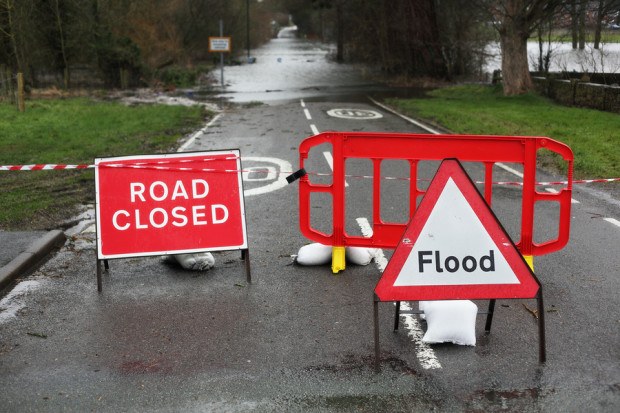The earnings of French and German insurers during the first half of 2016 will be dampened by flood claims following storms Elvira and Friederike, which pounded the countries in quick succession between late May and early June, according to a briefing published by A.M. Best.
However, the ratings agency did not expect any negative rating actions on the insurers it rates because “the flood events are not likely to drive a material deterioration in full-year 2016 performance or affect capitalization.”
A.M. Best notes that insured losses from the floods are estimated at between 900 million euros ($998.9 million) and 1.4 billion euros ($1.6 billion) for the French market and around 1.2 billion euros ($1.3 billion) for German insurers, said the report entitled, “French and German Floods to Dampen Insurers’ H1 2016 Earnings; Negative Rating Actions not Anticipated.”
“Losses will emanate primarily from personal property and motor business, with commercial risks, including business interruption, expected to account for a smaller proportion of claims,” the briefing added.
Penetration for Flood Cover
The disparity between economic and insured losses will be greater in Germany than in France as a result of lower levels of flood insurance penetration, the briefing indicated.
“Insurance penetration rates for flood cover are high in France, currently estimated at around 90 percent, which should serve to moderate the gap between insured and economic losses arising from these events,” A.M. Best said, noting the floods are likely to be the largest insured natural catastrophe loss France has seen since 1982.
The high penetration of flood protection in France is largely due to the existence of a natural catastrophe scheme, provided by France’s state-backed reinsurer, Caisse Centrale de Réassurance (CCR), and guaranteed by the government, said the ratings agency.
A.M. Best explained that the scheme requires direct insurers to provide their policyholders with natural catastrophe cover, which is “bundled with their standard policies and charged at a state-defined flat rate with fixed deductibles.”
CCR offers insurers reinsurance protection composed of a “50 percent quota share treaty and an unlimited stop-loss treaty backed by an explicit guarantee provided by the French government,” the briefing added.
Although direct insurers are not required to get their catastrophe cover from CCR, A.M. Best said, “the unlimited nature of the cover offered, along with the government’s backing, has resulted in CCR holding a market share of approximately 90 percent in this segment.”
As a result, CCR is expected to incur approximately half of the total insured losses for the floods in France, the briefing confirmed.
German Floods
Given the low average penetration rate for flood protection in Germany – 35 percent for residential buildings – economic losses are expected to be significantly higher than insured losses, the report said.
“With no government-backed or formalized natural catastrophe scheme in place in Germany, flood risk is generally a standard exclusion from industrial, commercial and homeowner policies,” the briefing explained.
While flood coverage can be added as a policy extension, “this additional protection often results in a notable increase in premium, particularly for risks domiciled in flood prone areas of the country,” A.M. Best added.
“Insurers typically retain a larger portion of these risks directly, with reinsurance coverages purchased in open market conditions.”
Given the localized nature of the German floods, A.M. Best said that small, regional insurers are likely to be disproportionately affected.
For most insurers, however, losses are unlikely to be high enough to hit their catastrophe excess of loss programs, “although for those with proportional reinsurance coverage, some of the losses will be passed to reinsurers,” the report said.
Source: A.M. Best
*This story ran previously in our sister publication Insurance Journal





















 Breaking: Andersen to Replace Zaffino as CEO of AIG on June 1
Breaking: Andersen to Replace Zaffino as CEO of AIG on June 1  Underwriter, Actuary Fears of AI Drop; Work Needed on Collaboration
Underwriter, Actuary Fears of AI Drop; Work Needed on Collaboration  Surge of Supercharged Hurricanes Prompt Call for Cat 6 Classification
Surge of Supercharged Hurricanes Prompt Call for Cat 6 Classification  Executives on the Move at Liberty Mutual, Cowbell, W. R. Berkley
Executives on the Move at Liberty Mutual, Cowbell, W. R. Berkley 





